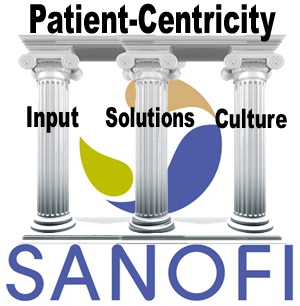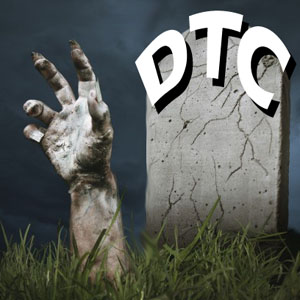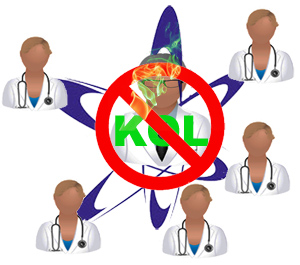Vol. 14, Issue No. 3: April 2015 – EXECUTIVE SUMMARY
The Debut of the Chief Patient Officer Is It Just a Passing Fad or Will It Transform Pharma? New Engaging patients is a major theme at many drug industry conferences these days. The recent eyeforpharma Barcelona 2015 conference was no exception. Three days of presentations ended with a keynote by Dr. Anne Beal, Chief Patient Officer (CPO), at Sanofi, who spoke about the “Chief Patient Officer of the Future.”
New Engaging patients is a major theme at many drug industry conferences these days. The recent eyeforpharma Barcelona 2015 conference was no exception. Three days of presentations ended with a keynote by Dr. Anne Beal, Chief Patient Officer (CPO), at Sanofi, who spoke about the “Chief Patient Officer of the Future.”
Dr. Beal — a pediatrician and public health specialist — joined Sanofi in 2014 after serving as Deputy Executive Director and Chief Officer for Engagement at the Patient Centered Outcomes Research Institute (PCORI), the United States’ largest research institute focused on patient-centered outcomes research.
This article summarizes the roles of Chief Patient Officers in bringing the patient perspective into their company’s work. Sanofi is used as a case study.
Topics (partial list):
- Sanofi’s Three Pillar Strategy
- Patients Are Eager to Help
- Overcoming Pharma’s “Dark Side”
- What About Fair Balance?
- A Language Problem
- Interview with a CPO
- Chief Patient vs. Chief Medical Officer
Download the full article (PDF file) here:
www.pharma-mkting.com/news/pmnews1403-article01.pdf DTC Ad Spending Rises From the Grave Pfizer Leads the Ghoulish Pack 2014 was a banner year for the pharmaceutical industry. The FDA approved a record number of new drugs and sent out the fewest enforcement letters since 1997 — the dawn of the direct-to-consumer (DTC) advertising era in the U.S. (read “Banging Year for Drug Approvals, Wimpy Year for Enforcement Actions“).
2014 was a banner year for the pharmaceutical industry. The FDA approved a record number of new drugs and sent out the fewest enforcement letters since 1997 — the dawn of the direct-to-consumer (DTC) advertising era in the U.S. (read “Banging Year for Drug Approvals, Wimpy Year for Enforcement Actions“).
Perhaps coincidentally, 2014 also saw DDTC advertising spending rise from the grave of the 2007-2008 Great Recession. According to data from Nielsen, the U.S. drug industry spent $4.53 Bn on DTC advertising in 2014.
This article presents the data and discusses Pfizer’s leading role in the DTC ad resurgence, especially in regard to TV advertising, which accounts for almost 70% of all DTC advertising dollars.
Topics (partial list):
- Chart: DTC Ad Spend Trend 1998 through 2014
- Pfizer Continues to Dominate DTC Ad Spending
- Chart: The Top 10 Most Advertised Rx Brands in 2014
- Chart: 2014 DTC Spending by Media Type
- TV Ads Are for Rich Pharma
- Chart: Time Spent in Media by Consumers vs. % Advertising Spending by Pharma
- TV Ad Spending Trend
- Why Does Pfizer Spend So Much More?
- Why DTC Spending Likely to Increase Again
Download the full article (PDF file) here:
www.pharma-mkting.com/news/pmnews1403-article02.pdf A KOL by Any Other Name Too Toxic for Everyday Use, or Still the Best Term to Use? Nearly two-thirds (62%) of physicians deemed to be genuine medical experts believe the pharmaceutical industry should replace the term “Key Opinion Leader” (KOL).
Nearly two-thirds (62%) of physicians deemed to be genuine medical experts believe the pharmaceutical industry should replace the term “Key Opinion Leader” (KOL).
That was one of the insights gleaned from an inter-national online survey presented at the Medical Affairs Leaders Forum in Berlin, Germany, in February, 2015. The survey of 185 pharma professionals and 199 “real” KOLs was conducted by System Analytic, which is a company that helps pharmaceutical teams “identify, map, and engage with their medical experts and key stakeholders.”
This article summarizes the results of the KOL Name Change Survey and discusses how to change the underlying process by which pharma companies choose KOLs.
Topics (partial list):
- What’s a KOL Worth?
- Expert vs. High Prescriber
- The Dark Side of KOLs
- Pharma’s Opinion
- If Not KOL, What?
- Online versus Real World Popularity
- Alternative Terms for KOL Preferred by Pharma Execs
- Change the Underlying Process
- What About “Key Patient Leaders (KPLs)?”
Download the full article (PDF file) here:
www.pharma-mkting.com/news/pmnews1403-article03.pdf



![6 Digital Tools at the Center of Healthcare Digitalization [INFOGRAPHIC]](http://ec2-54-175-84-28.compute-1.amazonaws.com/pharma-mkting.com/wp-content/uploads/2021/04/6DigitalTools_600px-218x150.jpg)




![6 Digital Tools at the Center of Healthcare Digitalization [INFOGRAPHIC]](http://ec2-54-175-84-28.compute-1.amazonaws.com/pharma-mkting.com/wp-content/uploads/2021/04/6DigitalTools_600px-100x70.jpg)




